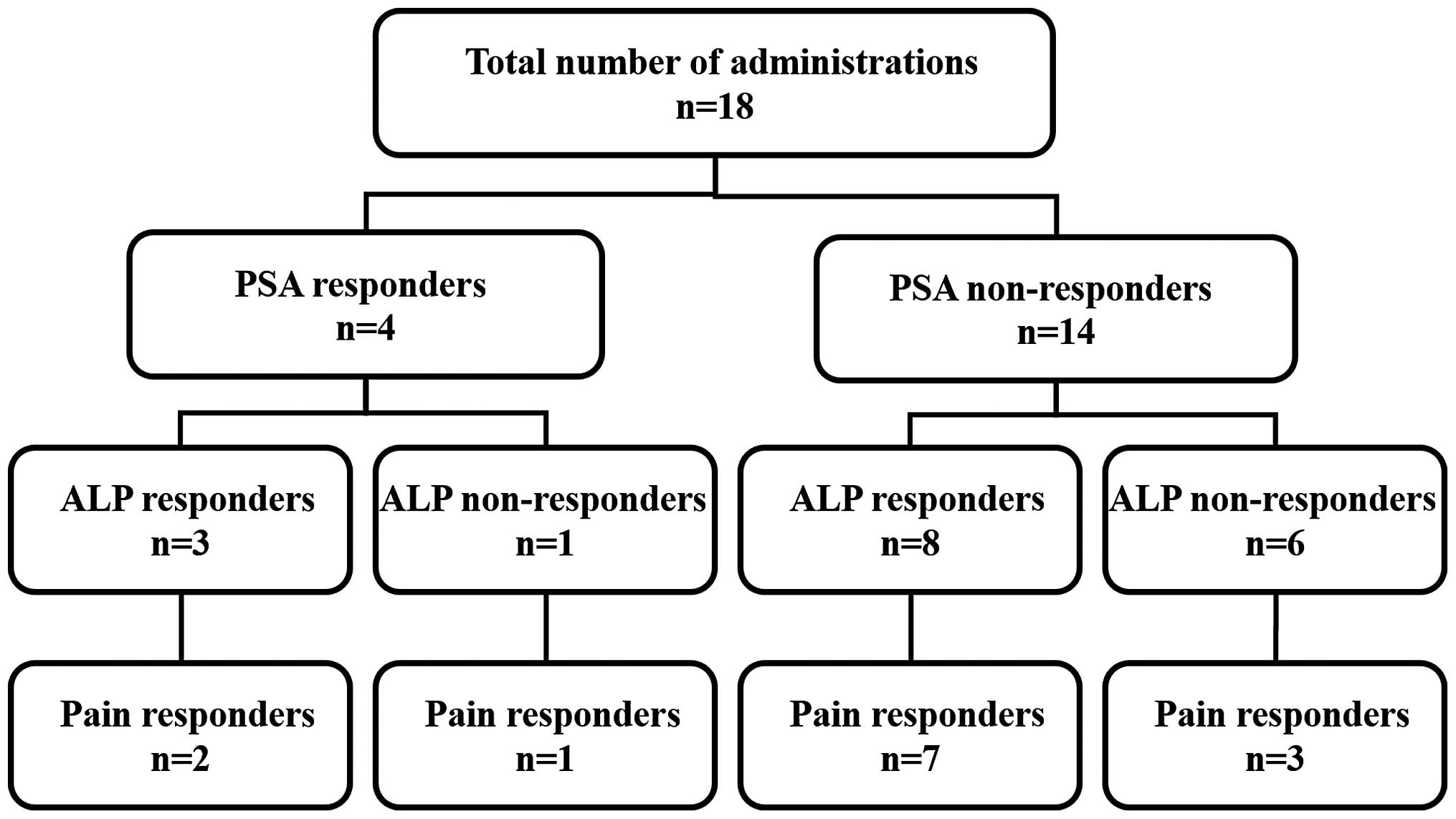Palliative effects and adverse events of strontium‑89 for prostate cancer patients with bone metastasis
- Authors:
- Published online on: October 30, 2014 https://doi.org/10.3892/mco.2014.449
- Pages: 257-263
Metrics: Total
Views: 0 (Spandidos Publications: | PMC Statistics: )
Total PDF Downloads: 0 (Spandidos Publications: | PMC Statistics: )
Abstract
The aim of the present study was to evaluate the palliative effects and adverse events of strontium‑89 (Sr‑89) in patients with bone metastasis from prostate cancer. A total of 18 patients with prostate cancer and painful bone metastases, as diagnosed on bone scintigraphy, who were treated with Sr‑89 at the National Kyushu Cancer Center between February, 2008 and April, 2014 were reviewed. Of the 18 subjects, 13 (72.2%) achieved a pain response, whereas 5 were classified as pain non‑responders (27.8%). According to a logistic regression analysis, the pre‑administration characteristics, including age, prostate‑specific antigen (PSA), alkaline phosphatase (ALP), history of bone‑modifying agent administration, opioid use or palliative radiation therapy, time after the combined androgen blockade nadir and time since the pain onset, were not found to be significant predictors of the pain response. Similarly, the post‑administration characteristics, including pain flares and the PSA and ALP response, were not found to be significant predictors of the pain response. Although no patients exhibited leukocyte toxicities, 2 patients experienced myelosuppression, involving anemia and thrombocytopenia, requiring transfusion of red cell or platelet concentrate following Sr‑89 treatment. of the 18 patients, 5 (27.8%) reported pain flares, all of whom were successfully treated with rescue drugs alone. According to the logistic regression analysis, of the pre‑administration characteristics, only ALP was identified as a significant predictor of bone marrow suppression in the univariate and multivariate analyses (P=0.006). Therefore, Sr‑89 treatment was found to be effective in ameliorating bone pain associated with metastasis from prostate cancer. Although it is difficult to identify the patients who will receive pain relief prior to Sr‑89 administration, this drug should be administered during the early stages due to the potential for bone marrow suppression in patients with high ALP levels.










